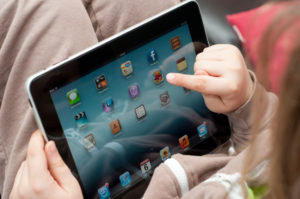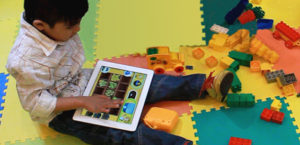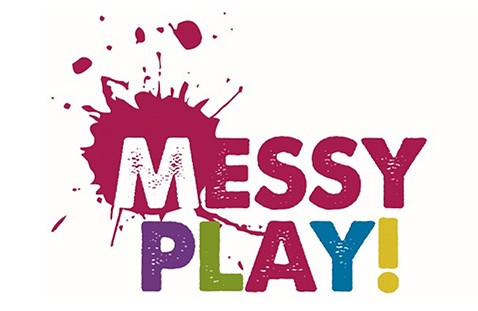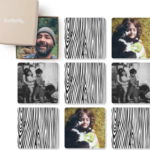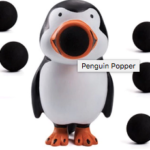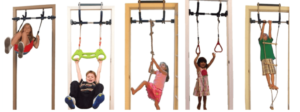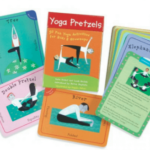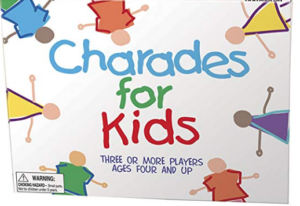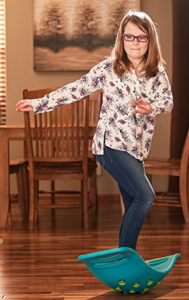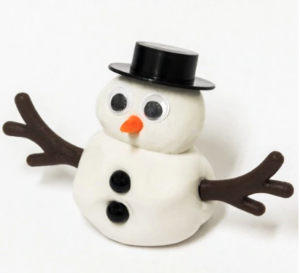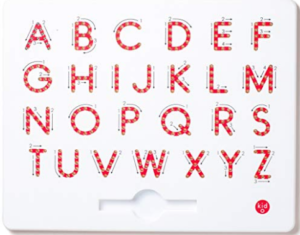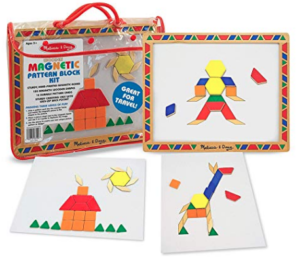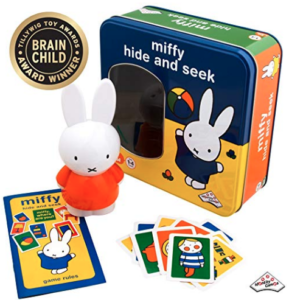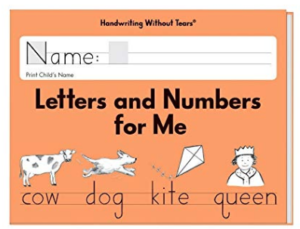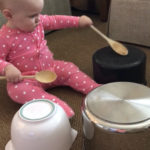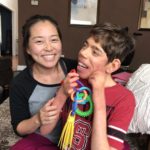Blog

March 2019- Apps! Our Top Picks for OT Use 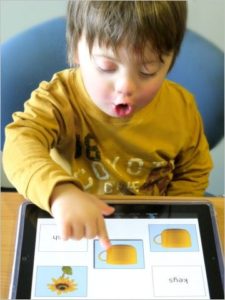
By: Emily Mason, OTR/L
While pondering my topic for the monthly blog, it occurred to me that I am often asked to share app recommendations with colleagues, teachers, and clients. Let’s face it; searching for apps can be daunting! There are thousands to choose from, it is time consuming, and who wants to pay for an app before they try it?! I too rely heavily on recommendations from peers; hence, the apps on this list!
But why use apps? Apps can help to reinforce skills learned, organize activities, or provide visual modeling of tasks. This can include things like fine and gross motor skills, visual perceptual skills, activities of daily living, organizational skills, sensory processing, self-regulation, attention, academics and much more. Your might be asking yourself, “why is an occupational therapist promoting more screen time?’ The fact is that many of our kids are motivated by technology. Apps have been designed to peak children’s interest and they may be the gateway to getting them to try a new skill, hone a skill, or even teach them how to do a new skill. Video modeling is also a great way to see a task from beginning to end, allowing for understanding of the whole concept. While technology is ever more present in our daily lives, it is important to maintain limits and screen time. Technology should always be used in conjunction with other activities, and I would never promote screen time over playtime!!
Here are a few extra tips when using a portable device:
- Try using a stylus versus finger with onscreen tasks to promote functional grasp patterns.
- Place the device on a slant to promote proper alignment for reading and writing. This will also help to develop muscle control and strength for writing.
- Have your child lie on their stomach propped on elbows for upper extremity and core engagement/strengthening.
Letter Formation apps:
Handwriting Without Tears: Wet- Dry- Try for Capitals, Numbers and Lowercase
- Provides a systematic approach to letter-formation using audio and visual feedback for correct letter formation. The level of assistance is graded as each task is completed to promote independence. The only challenge is that it can be frustrating if you don’t have the best motor control. http://wetdrytry.com/tour/
Write my Name
- Provides visual and audio reinforcement for letter formation using correct letter formation. Allows for the creation of your own name to practice tracing and writing. It does not allow for fading of the level of assistance.
https://itunes.apple.com/us/app/write-my-name/id500623496?mt=8
Written Composition and Math:
Snaptype
- This allows students to create textboxes to fill in answers on any scanned or downloaded worksheet. Completed worksheets can be saved, emailed, or printed. This can be done in the classroom as the teacher hands out worksheets. The student can take a picture, upload it to the app, and fill in the answers. It is great for those that struggle with handwriting.
https://itunes.apple.com/us/app/snaptype/id1124115982?mt=8
Clicker Sentences
- Allows a student to create sentences by taping on provided words. The sentences can be altered to be in guided order, random order, highlighted order, and you can select to include or not include a model sentence. You can create your own pictures to write a sentence about or use the model pictures provided. It can also be customized to create your own sentences.
https://www.cricksoft.com/us/clicker/ipad/clicker-sentences
Math Paper
- This app lets kids do all levels of math problems independently. The paper is designed with grids to help students with organization. Students have to enter the correct operation sign and plug in the correct numbers. It can be used for addition, subtraction, multiplication, division, algebra, and geometry. It does not do the math for them.
http://panthertechnology.com/products/math-paper/
Fine Motor Games:
Dexteria Jr.
- Focuses on fine motor skills, eye-hand coordination, and motor control through interactive games. There are several levels for increased difficulty and it provides percentages and scores. Great for working visual tracking, attention, and pre-writing skills.
https://itunes.apple.com/us/app/dexteria-jr-vpp-fine-motor-skill-development/id905525649
Bubble Pinch:
- This is an interactive fast past game that promotes visual attention, tracking, and promotes arch and pincer development.
https://www.appdecide.com/app/ios/bubble-pinch/541701178/
Brush up:
- This app uses a cartoon character to model proper brushing. It helps train children on proper technique and uses mirror imaging so the child can make sure they are performing the task correctly. https://itunes.apple.com/us/app/brush-up-toothbrush-trainer/id967009000?mt=8
iDo Getting Dressed (C.E.T. – The Center for Educational Technology)
- Provides videos of teenagers demonstrating and sequencing the steps of putting on socks, shoes, getting undressed, getting dressed for bed, girl getting dressed, boy getting dressed, clothes preparation for weather, and getting ready before leaving the house. This app provides a visual sequence with narrated text of each step and then allows the student to mark each step completed. It also allows the student to create a personal video of the task. There are games to help learn the sequence for each task.
https://itunes.apple.com/us/app/ido-getting-dressed/id931890910?mt=8
iDo Hygiene (C.E.T – The Center for Educational Technology)
- Provides videos outlining personal hygiene tasks to include brushing teeth, shampooing, taking a shower, hand washing, applying deodorant, boy in bathroom, girl in bathroom, public restroom use, combing long hair, shaving with an electric shaver, and making a ponytail, toilet training, using a public bathroom. This app provides a visual sequence with narrated text of each task and allows the student to mark each step completed. It also allows the student to create a personal video of the task. There are games to help learn the sequence for each task.
https://itunes.apple.com/us/app/ido-hygiene/id931411575?mt=8
Shoe Tying
- While I have a great app for this on my Ipad, it appears that it can no longer be downloaded. I found a link with similar visuals and demonstration.
- https://aesapps.com/activity-app/shoetying1/
Organization & Visual Schedules
Choiceworks
- This is my most favorite and most used app. It allows the user to create visual schedules of whatever may be needed: morning routines, daily routines, and individual tasks (i.e: steps to make a sandwich), whatever you want to create! The cool thing about this app is that you can add a timer to each task, rearrange visuals, add your own pictures, add audio to pictures, or put in your own videos. This app is great for outlining OT sessions, daily routines, setting expectations, and for helping children learn new skills. Each routine can be named, multiple routines can be created, and it even has a few social stories associated with it.
https://itunes.apple.com/us/app/choiceworks/id486210964?mt=8
Social Stories Creator & Library by Touch Autism
- This app allows the user to create and share social stories and visual schedules. Upload your photos, words, and audio to make the stories or visual schedules customized.
http://touchautism.com/app/social-stories-creator-library/
Self-regulation
Breathe Easy
- Provides large visual to help coordinate breaths, while the object gets smaller and larger with exhalation and inhalation. The colors can be customized as well as the shape. You can also set the number of seconds per breath.
https://play.google.com/store/apps/details?id=com.moodtools.breatheeasy&hl=en_US
Calm
- This app promotes meditation and mindfulness. There are many different options for medication: relaxing music, bedtime stories, and body movements for relaxing.
Zones of Regulation
- There are two different apps to go with the Zones of Regulation program. This program helps to teach emotions by classifying them into zones. Once this is mastered, children can begin to explore how to move from zone to zone using cognitive, sensory, or calming strategies. This program offers interactive games and contrived scenarios to help with emotional regulation.
https://itunes.apple.com/us/app-bundle/the-zones-of-regulation-complete-bundle/id1073839090?mt=8
Pro Metronome
- Free app that allows you to create your own beat through the use of a metronome. This is a great app to get kids organized by having them clap, tap or stomp to the beat.
https://itunes.apple.com/us/app/pro-metronome-tempo-beat-subdivision-polyrhythm/id477960671?mt=8
Exercise
Sworkit Kids
- A kid’s workout tool that allows for customization of age-appropriate exercises. Video modeling and verbal instruction are included with each exercise.
https://itunes.apple.com/us/app/sworkit-kids/id1043023032?mt=8
Yoga
- While this is not an app, it can be found on youtube and it is great for promoting mindfulness and relaxation through yoga. Yoga is also a great tool for integrating sensory information and strengthening the body. The creator of this program has yoga adventures for just about anything that you can imagine: harry potter, frozen, disco, dinosaur, and bowling to name a few. Check her out to see the many yoga adventures your child could go on!
https://www.youtube.com/user/CosmicKidsYoga
Happy app hunting!!!
– Emily
Emily Mason, MS OTR/L
Occupational Therapist
Cornerstone Therapy Associates, LLC
February 2019: Milestone Moments
By: Meg Dominick-Haughton, OTR/L
Milestone Moments – Learn the Signs. Act Early.
You can follow your child’s development by watching how he or she plays, learns, speaks, and acts. These offer important clues about your child’s development. We will look at what your baby should be doing at certain months (ages 2 months – 2 years) and how you can help your baby’s development.
Your Baby At 2 Months
In the area of social emotional development, your baby at 2 months old can briefly calm himself, possibly bringing his hands to his mouth and sucking on his hand. He will begin to smile at people and try to look at his parent. In the area of language and communication, your baby will coo and make gurgling sounds. He turns his head towards sounds. In the area of cognition, your baby will pay attention to faces, begin to follow things with eyes and recognize people at a distance. He will begin to act bored by crying or fussing if the activity doesn’t change. In the area of movement and physical development, your baby can hold his head up and begin to push up when lying on his tummy. He makes smoother movements with his arms and legs.
How can you help your baby’s development at 2 months of age? Cuddle, talk, and play with your baby during feeding, dressing and bathing. Begin to help your baby get into a routine, such as sleeping at night more than in the day, and have regular schedules. Copy your baby’s sounds sometimes, but also use clear language. Lay your baby on his tummy when he is awake and put toys near him. Encourage your baby to lift his head by holding toys at eye level in front of him. Hold a toy or rattle above your baby’s head and encourage her to reach for it.
Your Baby At 4 Months
In the area of social emotional development, your baby at 4 months will smile spontaneously, especially at people. She copies some movements and facial expressions, like smiling or frowning. She likes to play with people and might cry when playing stops. In the area of language and communication, your baby will begin to babble with expression and copy sounds heard. She cries in different ways to show hunger, pain or being tired. In the area of cognition, your baby will let you know if she is happy or sad. She responds to affection, reaches for toy with one hand, uses hands and eyes together. She follows moving things with eyes from side to side, watches faces closely and recognizes familiar people and things at a distance. In the area of movement and physical development, your baby holds her head steady unsupported, pushes down on legs when feet are on a hard surface. She may be able to roll over from tummy to back. She can hold a toy and shake it, swing at dangling toys, bring hands to mouth and push up to elbows when on her tummy.
How can you help your baby’s development at 4 months of age? Set steady routines for sleeping and feeding. Pay close attention to what your baby likes and doesn’t like; you will know how best to meet her needs and what you can do to make your baby happy. Have quiet play times when you read or sing to your baby. Give age-appropriate toys to play with, such as rattles or colorful pictures. Provide safe opportunities for your baby to reach for toys with hands or kick toys with her feet and explore her surroundings. Put toys or rattles in your baby’s hand and help him to hold them.
Your Baby At 6 Months
In the area of social emotional development, your baby at 6 months will know familiar faces and begin to know if someone is a stranger. He likes to play with others in particular his parents, responds to other people’s emotions, often seems happy, and likes to look at self in a mirror. In the area of language and communication, your baby responds to sounds by making sounds, strings vowels together when babbling, and likes taking turn with parent while making sounds. He will respond to his own name, make sounds to show joy and displeasure and will begin to babble consonant sounds (“m”, “b”). In the area of cognition, your baby looks around at things nearby, shows curiosity about things and tries to get things that are out of reach. He will begin to bring things to his mouth and transfer a toy from one hand to the other. In the area of movement and physical development, your baby will roll over in both directions (front to back, back to front). When standing, he supports his weight on legs and might bounce. He will begin to sit without support, rock back and forth, and sometimes crawling backwards before moving forward.
How can you help your baby’s development at 6 months of age? Play on the floor with your baby every day. Show your baby how to comfort himself when he’s upset. He may suck on his fingers to self-soothe. Use “reciprocal” play-when he smiles, you smile; when he makes sounds, you copy them. When your baby looks at something, point to it and talk about it; label new things for your baby. When he drops a toy on the floor, pick it up and give it back. This game helps him learn cause and effect. Hold your baby up while he sits or support him with pillows; let him look around and give him toys to look at while he balances. Put your baby on his tummy or back and put toys just out of reach, encouraging him to roll over to reach the toys.
Your Baby At 9 Months
In the area of social emotional development, your baby at 9 months may be afraid of strangers, clingy with familiar adults and have favorite toys. In the area of language and communication, your baby understands “no”. She will make a lot of different sounds like “mamamama” and “babababa”. She copies sounds and gestures of others as well as uses fingers to point at things. In the area of cognition, your baby watches the path of something as it falls, looks for things she sees you hide, and plays peek-a-boo. She will put things in her mouth, transfers things smoothly from one hand to the other, and picks up things like cereal between thumb and index finger. In the area of movement and physical development, your baby pulls to stand and stands while holding on and sits without support. She can crawl and can transition in and out of the sitting position.
How can you help your baby’s development at 9 months of age? Pay attention to the way she reacts to new situations and people; try to continue to do things that make your baby happy and comfortable. Play games with “my turn, your turn”. Talk about what your baby wants when she points at something. Ask for behaviors that you want; for example, instead of saying “don’t stand”, say “time to sit”. Teach cause-and-effect by rolling balls back and forth, pushing toy cars and trucks, and putting blocks in and out of a container. Play peek-a-boo and hide-and-seek. Put your baby close to things that she can pull up on safely.
Your Baby at 12 Months (1 Year)
In the area of social emotional development, your baby at 1 year is shy or nervous with strangers, cries when mom or dad leaves. He has favorite things and people but shows fear in some situations. He will hand you a book when he wants to hear a story and will repeat sounds or actions to get attention. He cooperates with dressing by putting out an arm or leg, and plays games such as “peek-a-boo” and “pat-a-cake”. In the area of language and communication, your baby will respond to simple spoken requests and will use simple gestures like shaking head “no” or waving “bye-bye”. He will use inflection in his voice, say “mama” and “dada” as well as exclamatory phrases such as “uh-oh!” and will try to imitate words you say. In the area of cognition, your baby explores things in different ways (shaking, banging, throwing), finds hidden things easily, and looks at the right pictures or things when named. He copies gestures, puts things in and takes out of containers, and bangs two things together. He will have more purposeful play with toys, using them correctly, releases things from hand spontaneously without help, uses an index finger to point and poke, and follows simple directions like “pick up the toy”. In the area of movement and physical development, your baby gets to a sitting position without help, pulls to stand and cruises along the furniture. He may stand alone or take a few steps alone.
How can you help your baby’s development at 12 months of age? Spend a lot more time encouraging wanted behaviors than punishing unwanted behaviors (4 times as much encouragement for wanted behaviors as redirection for unwanted behaviors). Read with your child every day, having your child turn the pages; take turn labeling pictures with your child. Give your child crayons and papers, and let your child draw freely; show your child how to imitate drawing vertical and horizontal lines. Play with blocks, shape sorters and other toys that encourage your child to use his hands. Give your child push toys like a wagon or kiddie push car for assisted walking.
Your Baby at 18 Months
In the area of social emotional development, your baby likes to hand things to others as play, may have temper tantrums, may be afraid of strangers and shows affection to familiar people. She plays simple pretend play, may cling to caregivers in new situations, points to show others something interesting, and explores alone but with parent close by. In the area of language and communication, your baby says several single words, says and shakes head “no”. She points to show someone what she wants. In the area of cognition, your baby knows what familiar things are (telephone, brush, spoon). She points to at least one body part, engages in pretend play such as feeding a doll, and points to get the attention of others. She can make spontaneous marks on paper and follow 1-step verbal commands without gestures. In the area of movement and physical development, your baby walks alone and may walk up steps and run. She will pull toys while walking, can help undress herself, will drink from a cup and eat with a spoon.
How can you help your baby’s development at 18 months of age? Provide a safe, loving environment; it’s important to be consistent and predictable. Encourage pretend play by providing toys such as dolls, play telephones and kitchen materials. Encourage empathy. Use words that describe feelings and emotions. Provide balls for her to kick, roll, and throw. Encourage her to drink from her cup and use a spoon, no matter how messy. Blow bubbles and let your child pop them. *The American Academy of Pediatrics recommends that all children be screened for general development and autism at the 18-month visit.*
Your Baby at 24 Months (2 Years)
In the area of social emotional development, your baby will copy others, get excited around other children and show more and more independence. He shows defiant behaviors and mostly engages in parallel play (playing alongside children) but beginning to engage in cooperative play with peers. In the area of language and communication, your baby will point to things or pictures when named, knows the names of familiar people and body parts, and says 2-4 word phrases. He can follow simple instructions, repeats words overheard in conversation, and points to things in a book. In the area of cognition, your baby finds things under hidden screens, begins to sort shapes and colors and completes rhymes in familiar books. He plays simple make-believe games and builds towers of 4 or more blocks. He may begin to show a hand dominance, follows 2-step related instructions and labels items in a book. In the area of movement and physical development, your baby will stand on tiptoes, kick a ball, begin to run and walk up and down stairs holding onto hand or railing. He climbs onto and down furniture without help, thows a ball overhand and copies vertical and horizontal lines as well as circles.
How can you help your baby’s development at 24 months of age? Encourage your child to help with simple chores at home. Give your child attention and praise when he follows instructions. Encourage your child to say a word instead of pointing. Hide your child’s toys around the room and let him find them. Help your child do puzzles with shapes and colors. Encourage your child to play with blocks. Once your child walks well, ask him to carry small things for you. Take your child to the park to run and climb on equipment or walk on nature trails (uneven surfaces). *The American Academy of Pediatrics recommends that all children be screened for general development and autism at the 24-month visit.*
Talk with your child’s doctor at every visit about the milestones your child has reached and what to expect next. You as a parent are your child’s best advocate!
By: Kacie Coyne
The Benefits of Messy Play
Mention messy play and this typically makes most parents cringe. There are stains, spills, and splatter! Clean up is time-consuming. And many kids and adolescents don’t like to get their hands dirty… Yet, messy play is beneficial for so many reasons. And it’s not just for toddlers. Kids of all ages can benefit from getting their hands a little dirty.
First, it helps children develop their senses. Messy play provides sensory information in the form of visual, tactile (touch), and proprioceptive (body awareness) stimuli. It can offer new smells or tastes. Think about all the sensory properties involved in playdough activities:
● Visual: Playdough comes in a variety of colors; you can also add glitter for sparkle
● Olfactory: Playdough can be made by adding essential oils, such as lemon or lavender, or spices, such as cinnamon
● Tactile: Playdough is squishy and soft! It can be cold, lumpy, or smooth. And by hiding items in your playdough (beads, rocks, toy figurines), this adds another element of tactile experience
● Proprioceptive: Playdough offers a level of resistance, especially when kids are pulling, pushing, twisting, and rolling; this activates their muscles and increases awareness of their body
Messy play activities can also involve another sense, the oral sense. Having children participate in the food preparation process can encourage them to lick their fingers or taste the end product. For auditory input, you can have children make musical instruments with materials such as dried beans or rice. The more exposure to messy play, the more children can tolerate touch in other areas of their life, including handwashing, bathing, hair brushing, toothbrushing, etc., which is especially important for those who are tactilely sensitive.
Second, participating in messy play activities can help increase creativity, flexibility, and imagination. The opportunities are endless when children are given a big pile of playdough or shaving cream. See what they can come up with when allowed to explore these messy materials without restriction. Some children may need you to model play skills or give suggestions, such as building a snowman from floam, or making a pizza from playdough, but be sure to let them lead the process! Chances are, they will end up spending more time on these activities when there is no structure or end product to follow.
Third, messy play opportunities can increase children’s and adolescent’s independence with daily activities. There are no rules with messy play so children are free to make their own rules and play as they wish. They begin to explore the materials on their own and learn to problem solve. This can also be an opportunity for kids and adolescents to learn how to clean themselves up. If they don’t like the pudding on their fingers, they can lick it off. Or you can provide a wipe that they can use to clean their fingers, or they can dip their hands in a bucket of water in order to be clean.
Last, messy play helps develop motor skills. Digging in the dirt, scooping dried beans, and stirring water all require particular hand grasps on tools, enough fine motor strength to perform the task, and coordination to avoid spilling. Bringing a variety of tools into messy play adds an element of fun, but also teaches children how to hold tools the right way, such as holding a paintbrush. Kids learn to use both sides of their hands, which is an important step in handwriting. Squishing, squeezing, rolling, and pulling are all ways to strengthen fine motor skills.
If the idea of making a mess truly becomes an obstacle to engaging in messy play, try these adaptations:
Play in the bathtub
Throw a shower curtain liner down on the floor for easy clean up
Play outside!
Here are a few messy play ideas for children and adolescents of all ages:
Make your own sensory bin: Find a container of any size (tupperware, shoebox, storage bin), preferably with a lid, and fill with material of your choice (water beads, dried rice, dried beans, oatmeal flakes, corn kernels, dirt, sand, etc). Add in manipulatives such as toy figurines, legos, spoons, cups, utensils, blocks, marbles, etc. Feel free to switch the bin out every few months to keep the activity novel and exciting.
Food exploration activities:
Make hot chocolate
1. Fill pitcher with hot water and let cool to lukewarm temperature.
2. Use scissors to cut open the packet of hot chocolate mix.
3. Pour hot chocolate mix into the mug.
4. Use the pitcher to pour water into the mug. Stir the mix until dissolved. Talk about how the chocolate changed (powder to liquid), how it smells (sweet!), feels (warm), or what it looks like (different colors, dry vs wet, consistency).
5. Place marshmallows onto a plate and use tongs to pick up marshmallows and place in hot chocolate. You can also practice squishing marshmallows between thumb and forefinger or flatten them onto the plate before eating as a way to promote additional fine motor skills
6. Drink hot chocolate from coffee stirrer or straw (sucking from a straw helps provide a calming sensation).
Make mini pizzas:
1. Start with the box of Ritz crackers and encourage your child to open the package themselves, using scissors as an option.
2. Instruct your child to place several Ritz crackers on their plate. You can count them together or arrange them in shapes as they are placed on the plate.
3. Open tomato sauce and use a spoon to stir the sauce. Scoop the sauce out of the jar and place on top of each Ritz cracker. Spread the sauce out on the cracker. Talk about the color and smell of the sauce. Does it have spices? Vegetables? Is it warm or cold?
4. Use tongs to pick up cheese and sprinkle on top of tomato sauce. You can also sprinkle using fingertips.
5. Feel free to add other ingredients on top of the Ritz. Eat your mini-pizzas and talk about the flavors and textures!
Car wash game:
The child can roll cars/trucks through chocolate pudding, sand, dirt, or mud to get them really dirty. Notice the tracks the car makes when you roll it on paper. Next, have a bin of soapy water and take the cars/trucks to the car wash to get them all clean! You can have washcloths, toothbrushes, or scrub brushes to wash them off and incorporate fine motor skills.
Make slime/playdough/oobleck
Add in food coloring, scents or sparkles for different sensory experiences. There are tons of recipes online to meet your needs, and often with very few ingredients.
Bubbles!
Buy or make your own. Have fun popping bubbles with your index finger or different parts of your body. Take turns blowing bubbles from a wand. You can also add dish soap to a bucket of water and use a hand mixer to stir up lots of bubbly water.
Finger painting with pudding/shaving cream Place messy material on a mirror for an added visual. Practice drawing letters, shapes, numbers, or draw faces! You can use paintbrushes or tools if your child is aversive or hesitant to touch the material.
Remember it’s fun to get messy! These are all suggestions for activities so feel free to let your child lead the activity. You never know what they will come up with. Enjoy!
Kacie Coyne, MS, OTR/L
December 2018: Cornerstone’s Favorite Gifts for Pediatrics 2018
By: Caroline Byers
With the holidays and Winter approaching, I thought it would be fun for the December blog to be on occupational therapy pediatric gifts, just like Oprah’s Favorite Things. This season gets quickly filled with shopping and often for me can feel like a to-do list and less about giving thoughtfully and personally. It can be challenging to find a gift for anyone, but especially children with disabilities who could have a shorter attention span, more sensory needs or difficulties with fine motor skills. Gift giving for a child with special needs can be an opportunity to address areas the child is working on at school. It is an opportunity and a chance to carry over and support areas a child is working on and also be entertaining.
The list is targeted for children with disabilities (but any child would benefit from using these gifts) to help work on specific areas for growth. Since the winter time brings holiday break and snow days, the gifts are great to be used in your home and could also help combat cabin fever. Here are a few of our picks:
1) “Personalized Memory Game”
- To do: Have picture facing down and flip over two cards at a time to see if they match. If they do, leave them turned up. If they don’t match, turn them back over and it is the next person’s turn.
- Areas addressed: working memory, socialization (by turn taking), problem solving
2) “Holiday Poppers”
- To do: Wrap hand around back of body with arm out straight. Squeeze thumb and index fingers to pop out ball.
- Areas addressed: fine motor strength
3) “Bonobo Gym Indoor Playground”
- Addresses: upper body and core strength, bilateral coordination
4) “Yoga Pretzel Cards”
- Areas addressed: balance, motor planning, stretching, mental state (encouraging relaxation), sensory (used as sensory calming), socialization (if used with others)
5) “Charades for Kids”
- Areas addressed: cognitive processing, problem solving, turn taking, social awareness
6) “How Little Coyote Found His Secret Strength: A Story About How to Get Through Hard Times”
- Areas addressed: self-awareness of emotions and behaviors, self-esteem
7) “Teeter Popper”
- Areas addressed: balance, core and lower extremity coordination
8) “Melty Snowman Putty”
- Areas addressed: fine motor coordination, precision, motor planning
9) “Kid O A to Z Magnatab”
- To do: Trace letters using the magnetic pen to lift up the beads as you write.
- Areas addressed: letter formation, functional grasp
10) “Magnetic Pattern Blocks”
- To do: Look at the visual example and try to copy the pattern shown.
- Areas addressed: visual perceptual skill development, fine motor coordination
11) “Miffy Hide and Seek Game”
- To do: Hide the talking bunny somewhere in the house. Use cards to help assist with finding the bunny.
- Areas addressed: visual scanning and problem solving
12) “Handwriting Without Tears”
- Areas addressed: letter formation, spacing, line regard
Guide:
- Personalized Memory Game: https://www.shutterfly.com/photo-gifts/memory-games/embellished-border-memory-game?productCode=1191870&categoryCode=1176208&skuCode=1191872&interceptSource=recommendation
- Holiday Poppers: https://www.amazon.com/dp/B00770NADU/ref=sxts_kp_lp_2?pf_rd_m=ATVPDKIKX0DER&pf_rd_p=8778bc68-27e7-403f-8460-de48b6e788fb&pd_rd_wg=yEmJM&pf_rd_r=JVQ82E2QKY30F0GRSCHJ&pf_rd_s=desktop-sx-top-slot&pf_rd_t=301&pd_rd_i=B00770NADU&pd_rd_w=pdtXs&pf_rd_i=penguin+popper&pd_rd_r=14b86221-a333-4cfc-8804-cc9ca6ecb586&ie=UTF8&qid=1543353829&sr=2
- Indoor Playground: https://www.amazon.com/Gym1-Indoor-Playground-Plastic-Climbing/dp/B07576DNC6/ref=as_li_ss_tl?ie=UTF8&qid=1512531155&sr=8-4&keywords=gym1+deluxe+indoor+playground&linkCode=sl1&tag=indooractiveguide-20&linkId=8e6adfca2bd7e0710646eaae7e218973
- Yoga Pretzel Cards: https://www.amazon.com/gp/product/1905236042/ref=as_li_ss_tl?ie=UTF8&linkCode=sl1&tag=indooractiveguide-20&linkId=05159db03b4fa5bf0f0c4541a4c4263a
- Charades For Kids: https://www.amazon.com/Pressman-3009-12-Charades-for-Kids/dp/B00I4J63WI/ref=pd_sim_21_31?_encoding=UTF8&pd_rd_i=B00I4J63WI&pd_rd_r=c9b6e238-f288-11e8-9ae7-f7bd06e3c933&pd_rd_w=UFD3S&pd_rd_wg=ii09R&pf_rd_i=desktop-dp-sims&pf_rd_m=ATVPDKIKX0DER&pf_rd_p=18bb0b78-4200-49b9-ac91-f141d61a1780&pf_rd_r=E34N843DBR0GNXRHSAEG&pf_rd_s=desktop-dp-sims&pf_rd_t=40701&psc=1&refRID=E34N843DBR0GNXRHSAEG
- Teeter Popper: https://www.amazon.com/Fat-Brain-Toys-Teeter-Popper/dp/B00KY5HE9Q/ref=sr_1_2_sspa?ie=UTF8&qid=1543350867&sr=8-2-spons&keywords=balance+board+kids&psc=1
- Melty Snowman Putty: https://www.nationalautismresources.com/melty-snowman-putty/
- Kid O A to Z Magnatab: https://www.amazon.com/Kid-10342K-Z-Magnatab/dp/B0039X51NG/ref=sr_1_10?s=toys-and-games&ie=UTF8&qid=1543355265&sr=1-10&keywords=magnetic+writing
- Magnetic Pattern Blocks: https://www.amazon.com/gp/product/B000IE4B44?ie=UTF8&linkCode=as2&camp=1634&creative=6738&tag=prefthertoys-20&creativeASIN=B000IE4B44
- Hide and Seek Game: https://www.amazon.com/gp/product/B01F2MO1RI?ie=UTF8&linkCode=as2&camp=1634&creative=6738&tag=prefthertoys-20&creativeASIN=B01F2MO1RI
- Handwriting Without Tears: https://www.amazon.com/Handwriting-Without-Tears-Letters-Kindergarten/dp/B0062TL0G6/ref=sr_1_1_acs_ac_1?s=toys-and-games&ie=UTF8&qid=1544564947&sr=1-1-acs&keywords=handwriting+without+tears
Caroline Byers graduated from Virginia Tech in 2011 with a B.S. in Human Development. She had a diverse career path leading to her current role as a Certified Occupational Therapy Assistant, including working as a Nursing Assistant on an Oncology unit, a Physical Therapy Technician, and a Qualified Mental Health Professional for young women in the Richmond area. Caroline recently completed an Occupational Therapy Assistant program at South University. Caroline has always had a passion for children with disabilities as well as older adults, which was only affirmed in her time on fieldwork. Caroline is excited to be a part of the Cornerstone Therapy team and learn more through continuing education and her co-workers. Caroline loves being outdoors, hiking, going to Virginia Tech football games, traveling, and exploring Virginia wineries.
November 2018: Musical Ways to Train the Brain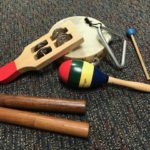
By Holly Timberline, OTR/L
Research has firmly established that exposure to music and rhythm helps little ones develop social, cognitive, and motor skills. Plus: It’s fun! Occupational therapists have long used music and rhythm to support skill acquisition in many areas. Here are a few ideas for using those tools at home:
FOR MOTOR SKILL
Develop kids’ spatial and body awareness with simple chants and songs. Keep directions simple (up, down, in, out), and model the actions as you say them. Here is one to get you started:
Shake it Up
Shake it UP! Shake it UP! Shake it UP! (shake arms overhead)
Shake it OUT! Shake it OUT! Shake it OUT! (shake arms out at sides)
Shake it DOWN! Shake it DOWN! Shake it DOWN! (Shake arms down)
Put it to an 8-count rhythm by counting aloud:
Shake it UP-2-3-4-5-6-7-8.
Shake it OUT-2-3-4-5-6-7-8.
Shake it DOWN-2-3-4-5-6-7-8.
Turn it into a sequence by counting to 8, then 6, then 4, then 2, then 1. Start with 8, as above, then count to 6:
Shake it UP-2-3-4-5-6.
Shake it OUT-2-3-4-5-6.
Shake it DOWN-2-3-4-5-6.
Then go to 4 (Shake it UP-2-3-4, etc.), then 2 (Shake it UP-2, Shake it OUT-2, etc., then finish with just one 1 shake in each direction:
Shake it UP, shake it OUT, shake it DOWN.
Shake it UP, shake it OUT, shake it DOWN.
Use the same chant to work on laterality by substituting “right” and “left” for “out.” It will change the rhythm slightly and make the chant longer, increasing the challenge:
Shake it UP-2-3-4-5-6-7-8.
Shake it RIGHT-2-3-4-5-6-7-8. (right arm out, left arm at side)
Shake it LEFT-2-3-4-5-6-7-8. (left arm out, right arm at side)
Shake it DOWN-2-3-4-5-6-7-8.
Laterality is the understanding that there are two sides of the body, and children depend on this awareness for coordinated movement. Another great way to support a child’s awareness of laterality is with the Hokey Pokey! (Click the link at the end if you need a reminder of how to sing the Hokey Pokey.)
ATTENTION, FOCUS, SELF-REGULATION
Help kids develop focused attention with the song “My Bonnie Lies Over the Ocean.” (Click the link at the end if you don’t know this song.) Have them listen for words that start with B, and raise their hand when they hear it. Next, have them alternate between sitting and standing on each “B” word. If you start sitting down, it would proceed like this:
My BONNIE (stand) lies over the ocean,
My BONNIE (sit) lies over the sea,
My BONNIE (stand) lies over the ocean,
Oh BRING (sit) BACK (stand) my BONNIE (sit) to me.
Here’s a more challenging activity to develop attention, coordination, sequencing, timing, and social skills. Use simple percussion instruments if you have them. If not, pots, pans, bowls, spoons, soup cans, blocks, and buckets work just as well!
Using a familiar nursery rhyme, have your child choose a specific word to play on her instrument. You’ll choose a different word to play. Using “Deedle, Deedle Dumpling, My Son John” as an example, it might go like this:
Deedle, deedle dumpling (you shake rattle on “dumpling”),
My son John (child bangs drum on “John”)
Went to bed with his stockings on
One shoe off, one shoe on,
Deedle, deedle dumpling (you rattle on “dumpling”), my son John (child drums on “John”)
After a few times, give each person an additional sound to play. For instance:
Deedle, deedle (child clinks spoon against can on each “deedle”) dumpling (you shake rattle on “dumpling”),
My son (you clap blocks together on “son”) John (child bangs drum on “John”)
Went to bed with his stockings on
One shoe off, one shoe on,
Deedle, deedle (child clinks spoon against can on each “deedle”) dumpling (you shake rattle on “dumpling”),
My son (you strike blocks on “son”) John (child bangs drum on “John”)
REGULATION
Music is a powerful tool to support transitions. There are enough “hello” songs, “goodbye” songs, playtime songs, and clean-up songs to sing your way through the day if you want to. And there are no rules against changing the words! “This is the way we wash our face” can just as easily be “This is the way we check our schedule” or “… take our pill” or “earn our tokens.”
Experiment with playing music first thing in the morning. Try classical one week (the “Morning Song” link below can get you started), a Disney soundtrack the next, and your own current favorite the week after that.
If you need something more focused, there is music produced specifically for therapeutic use. Quickshifts recordings developed by Vital Links are about 20 minutes long apiece and consist of music, nature sounds, or both. The recordings depend on rhythmic entrainment – the idea that the brain will naturally synchronize to an external rhythm – and binaural beat technology, in which music is played through two channels at slightly different frequencies, causing a change in brainwaves. Quickshifts selections are available for parents to use with their kids. Consider talking with an OT for pointers on which selections would best serve the needs of your child.
Happy music-making!
https://www.youtube.com/watch?v=4-Qu6uarPD4 (MY BONNIE LIES OVER THE OCEAN)
https://www.youtube.com/watch?v=s_P9PU5FcMQ (HOKEY POKEY)
https://www.mothergooseclub.com/videos/diddle-diddle-dumpling-nursery-rhyme/ (MY SON JOHN)
https://www.youtube.com/watch?v=PAu4TajHYLk (MORNING SONG – EDVARD GRIEG)
https://vitallinks.com/quickshifts/for-parents/ (QUICKSHIFTS)
<——Nothing fancy is needed to begin making music. Here, the author’s niece, Peyton, explores simple percussion instruments.
October 2018: Feeding Tips 101- How to help your “picky” eater
Is your child just a picky eater or is having a problem with feeding at home?
Does your child completely avoid eating entire food groups?
Does your child gravitate towards foods of one color?
Does your child have trouble going two days without repeating the same food?
Does your child seem disinterested in eating?
Does your child gag at the sight of certain foods?
If you answered yes to any of these questions, then your child might be more than a picky eater. Talk to your pediatrician about getting a referral for an occupational therapist that specializes in feeding.
Here are some tips for moms with babies or toddlers to help facilitate a larger variety to their diet before they become too picky:
- Avoid feeding your child the same food for breakfast, lunch or dinner each day. Change it up by rotating between at least 3 different meals.
- If your child seems to prefer the same food (ie. PBJ for lunch each day), change it up by serving it cut up into a shape one day, not cutting another, or putting it on a different plate.
- When possible, eat meals as a family.
- Try to avoid being a “short order cook”–give your child some of what everyone else is eating.
- Encourage babies to get messy and feed themselves.
- Cut real fruits/veggies into teeny tiny pieces for your baby to try vs. giving only pureed veggies and fruit.
- Once you are sure there are no allergies to food, get a list of fruits and vegetables that are in season and feed them 1 new one per week (whether they eat it or not at least you are exposing them to more).
- Allow your toddler to help you cook or be in the room while you do so.
- Allow your baby or toddler to engage in gross motor play prior to eating so that they can get their bodies “ready” for food.
- Make hand washing before a meal fun for your baby or toddler by buying soap that smells good and produces lots of bubbles or lather.
- Get your baby or toddler’s mouth ready for lots of flavor and textures by providing hard munchables with their meal (ie. bitter biscuit, frozen go-gurt, frozen waffle).
- Provide solids that melt (saltine cracker, puffs) and purees at each meal.
- If your baby or toddler is ready, provide a soft option(cut up pasta, meat, cooked vegetables) or hard mechanical (goldfish crackers, toast, apples) to each meal.
- Make a colorful meal by putting a lot of foods of various colors on the plate or tray together.
Bio: Mandy LeReche graduated with Virginia Tech in 2004 with a bachelor’s degree in Human Nutrition Foods and Exercise then went on to graduate from Virginia Commonwealth University in 2006 with a master’s degree in Occupational Therapy. Early in Mandy’s career as in Occupational Therapist, she became trained in the SOS feeding program and loved working with clients on improving their diets. That training allowed Mandy to “marry” nutrition with occupational therapy. Mandy has stayed passionate about feeding and enjoys working with clients in their homes, helping young children improve their diets and learning how diet can affect brain health which ultimately affects their functioning in all their occupations as a child.
September 2018: Sensory Ideas
Sensory Strategies…Why are they important?
Before school let out for the summer this year, I provided a generalized sensory sheet to send home with some kids to help parents facilitate opportunities for sensory input. I also wanted to educate parents in realizing how much sensory opportunity there is in their everyday environment. These opportunities are important during the summer when there is a period of time that can lack routine and structure, but they are also important to incorporate year round. Today, I plan to share some ideas with you. So here are a few points to consider:
First, what is “home” for you and your family (where you can add in some sensory strategies outside of school)?
Think about the environment that your kids spend time in when not in school. Is it mostly in the house? In the backyard? At a local playground or park? Next, consider that sensory opportunities at home may be most beneficial if you follow your child’s lead. For example, is he/she constantly bumping and crashing into furniture or crawling on all fours? Is he/she the first to find a way to climb a playground set or swing so intensely that your heart skips a beat? Is he/she constantly mouthing on items (even non-food items like shirt collars, pencils, etc)? Perhaps your kid won’t eat certain tastes or textures, or adversely they can’t get enough?
Maybe you have answered “yes” to a few of these, or maybe none of the above-mentioned sound relevant.
Why should I care about sensory opportunities?
We all have different sensory systems that we depend on to take in information, sight (vision), hearing (audition), taste (gustatory), smell (olfactory), touch (tactile), joint position (proprioception) and balance and movement (vestibular). Cool fact: There’s actually an eighth sense, but we can touch on that in a future post (so check back!). Regardless of our age, we all have different occupations or roles,that require us to take in, modulate, and discriminate a variety of sensations. Whether your role or occupation is being a CEO in a fast paced office environment, or a pre-k aged student prepping for transitioning to school, or even a student working to be available and attend to academics….we all have sensory needs.
**For more information, refer to American Occupational Therapy Association (AOTA)’s Frequently Asked Questions document regarding Ayres Sensory Integration.
https://www.aota.org/-/media/Corporate/Files/Practice/Children/Resources/FAQs/SI%20Fact%20Sheet%202.pdf
Alright, give me some great sensory ideas!
Think about what your environment is and use the following ideas to further develop whether you’re at your house, or out in a public location like a pool, playground or yard:
Sensory Activities that can have an “organizing” impact (improving attention, focus, engagement)
Jumping: On the bed, or couch, or trampoline
Climbing: rock wall, jungle gym, monkey bars, ropes, slides, trees (safely!)
Swinging: outdoor swings, indoor swings, porch swings, in a blanket
Riding: scooter board, bike, skateboard, roller blades, see saw, stroller
Pushing/Pulling heavy objects: carrying groceries, pulling weeds, vacuuming, pushing grocery cart, carrying laundry basket (or push), tug of war, digging
Chewing: crunchy, gum, salty/spicy, “Chewelry”, Cold/Thick via straw
Short bursts of vibration for calming: back massager, pillow massage, teethers
Playing active games: creating an obstacle course that encourages wheelbarrow walking, animal walking, running/jumping
Blowing: whistles, noise makers, pin wheels, bubbles
Rolling on large ball or sitting: Burrito rolling in a blanket, rolling over yoga ball, sitting on it at meal times or while sitting at the computer
Texture Play: finger paints, shaving cream, sand (kinetic or regular), ice cubes (different sizes), play dough, water beads
Give me some examples of how to apply these ideas!
Jumping:
Read a story, or listen to a song relating to the story “Eight Little Monkeys” while letting your kids jump on a designated area.
Play a game of Popcorn on the trampoline (curling up into a ball, and let peers jump to get the person to pop up)
Active Games:
Use cards (a regular deck of cards, or Uno cards, etc) and attach a gross motor movement with each color- every time you draw a color you have to complete that movement!
Create an obstacle course with available items that involve changing directions, rolling, jumping, climbing, etc. Provide a visual timer to see how many times the course can be completed in 2 minutes, or how fast it takes you to do one cycle. Make your obstacle course themed by animal movements, or superhero actions! Incorporate some of the items that you can ride with the obstacle course like a scooter board, balance bike, etc.
Get help from your kids with your everyday tasks such as moving laundry around the house or using a grocery cart for groceries. Depending on how you think your family dog may react, engage in a game of tug of war with the family canine.
Chewing:
Prepare your car or baby bag or purse with crunchy snacks, gum or straws. The biting/sucking action through the jaw delivers proprioceptive input quickly.
Messy play:
Create a work space outside that can get muddy, dirty, find (safe) extra tools that your kids can use for imaginative play. Google search “mud kitchen ideas” for example. Do some gardening, provide a watering can requires a little extra effort for your kids to pick up and use to water the plants.
The take away of this post is that there are sensory opportunities wherever you may be, and providing this input that can help your kids and family members feel calmer or more attentive does not have to feel like it’s an extra chore!
These are general suggestions with ideas and items that can be readily available. For specific, client-centered sensory diet suggestions, check with your occupational therapist!
Marissa’s Bio:
Marissa graduated from Lynchburg College in 2011 with a B.S. in Exercise Physiology. She earned her M.Ed in Kinesiology with an emphasis in Adapted Physical Education, focusing on including children with disabilities with general education physical education classes. In 2013, after working for one year at the Central Virginia Training Center with adults with disabilities, she returned to school (Tidewater Community College) to become a Certified Occupational Therapy Assistant in May of 2015. Marissa’s interest in occupational therapy started at a hand therapy clinic in Fairfax, VA and grew as she had the opportunity to volunteer, work and intern at the same clinic. Although most of the patients were adults, it was the opportunity to think creatively during treatment sessions and the opportunity to work with the school aged patients that encouraged her to continue toward her goal of working in the field of occupational therapy. Marissa currently works in a variety of settings including school system, day support programs, and in her patients’ homes. She particularly enjoys educating families and support staff on sensory integration, in addition to applying sensory approaches with clients. She hopes to ultimately be able to provide animal assisted therapy in her sessions in the future.

